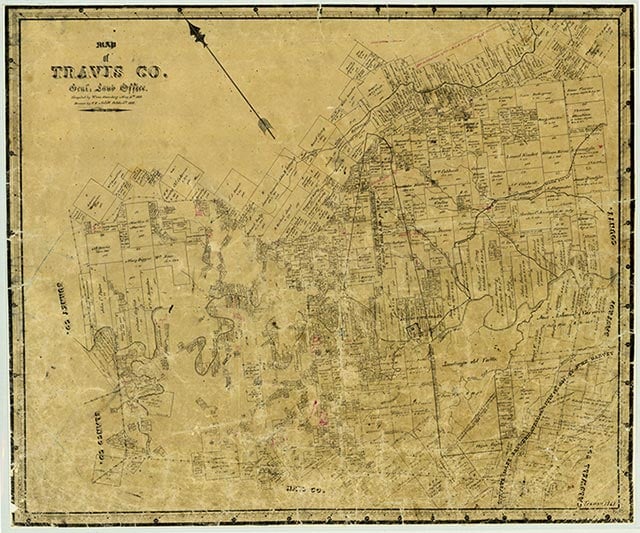Clarksville

Clarksville is just northeast of the intersection of the Missouri Pacific Railroad and West Tenth Street in west Austin, Travis County. The land, containing streams and steep hills, had previously been part of a plantation owned by Governor Elisha M. Pease. It is said that Pease gave the land to his emancipated slaves with the vain hope that they would remain near his mansion and be available for further service. Clarksville was founded in 1871 by Charles Clark, a freedman who changed his name from Charles Griffin after emancipation. Clark bought two acres of land from Confederate general Nathan G. Shelley and built a house on what is now West Tenth Street. He subdivided his land among other freedmen to start a community outside of Austin. Despite its isolation Clarksville came within the jurisdiction of Austin early in its history. Early Clarksville has been described by its older residents as a wilderness broken by an occasional dirt road and train tracks laid by the International-Great Northern Railroad in the 1870s. The Sweet Home Baptist Church served as the community meeting center. The church was organized in the home of Mary Smith on the Haskell homestead sometime before 1882, when the congregation purchased land on which to build a church. Rev. Jacob Fontaine served as the first minister. Elias Mayes, a black state legislator from Grimes and Brazos counties in the Sixteenth and Twenty-first legislatures, lived in Clarksville as early as 1875. He built a home on land purchased from Charles Clark in 1884. Many Clarksville residents worked in the cotton industry or farmed; others held jobs in surrounding communities. Leroy Robertson owned and operated a community store. In 1896 a school at Clarksville had an enrollment of forty-seven. In 1917 a new one-room schoolhouse was built and named Clarksville Colored School. It offered six grades.
Early in the twentieth century developers began to realize the land value of Clarksville, which lay near growing downtown Austin. Austin city policy aimed to concentrate the local black population in the east, and pressured black communities in west Austin, such as Clarksville and Wheatsville, to move. In 1918 the Austin school board closed the Clarksville school. Clarksville residents were later forced to use city services in east Austin or none at all. The 1928 master plan of the city of Austin recommended "that all the facilities and conveniences be provided the Negroes in this district, as an incentive to draw the Negro population to this area." Most Clarksville residents endured the lack of services, however, and refused to move. The community did experience two small emigrations to California, the first during World War I and the second in 1943. Clarksville maintained its school, which enrolled sixty-nine students in 1924, sixty-six in 1934, and seventy in 1940. Sometime in the 1960s the school building was moved to O. Henry Junior High School. The Sweet Home Baptist Church was rebuilt for a third time in 1935.
Nolan Thompson | © TSHA

Adapted from the official Handbook of Texas, a state encyclopedia developed by Texas State Historical Association (TSHA). It is an authoritative source of trusted historical records.

- ✅ Adoption Status:
- This place is available for adoption! Available for adoption!
- Adopted by:
- Your name goes here
- Dedication Message:
- Your message goes here
Belongs to
Clarksville is part of or belongs to the following places:
Currently Exists
No
Place type
Clarksville is classified as a Town
Location
Latitude: 30.28187440Longitude: -97.76417260
Has Post Office
No
Is Incorporated
No
